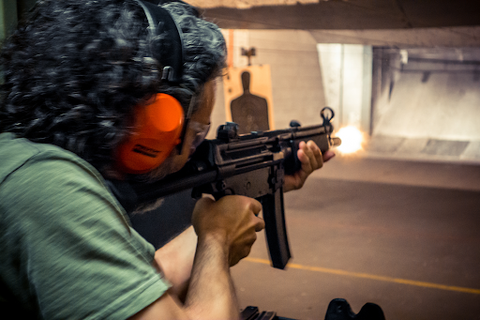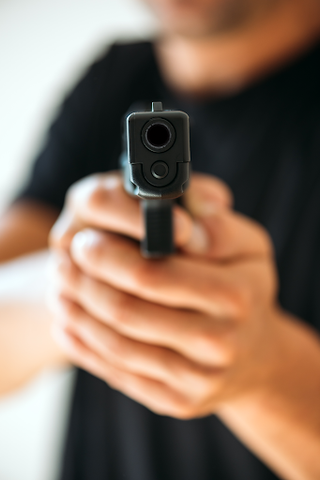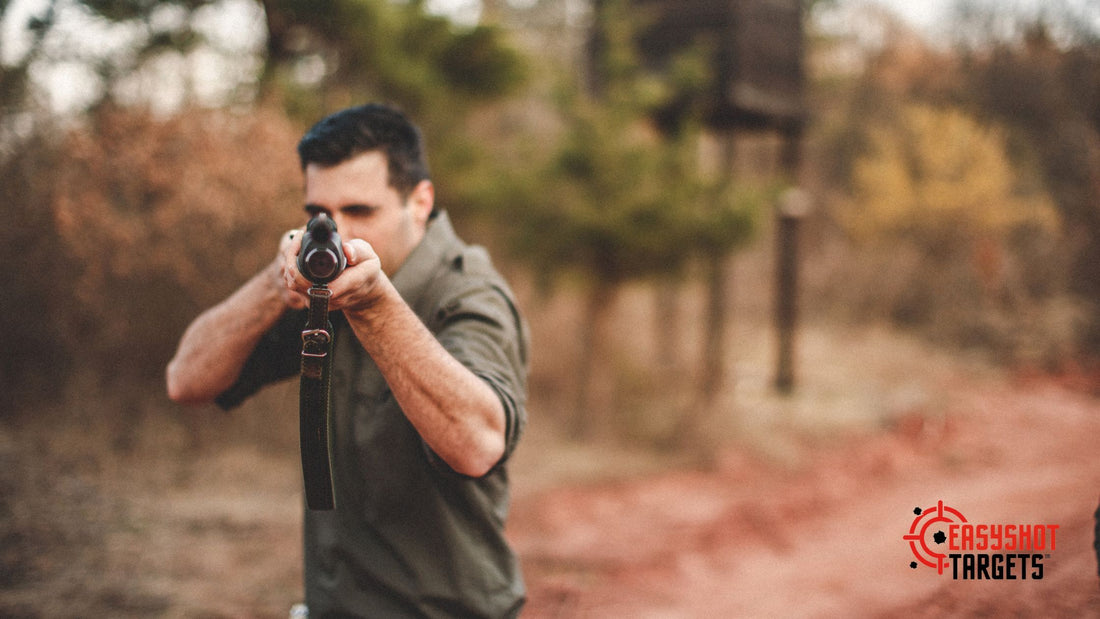Using live ammo for target practice can be costly and wasteful. What if there was a method to practice your shot without spending any money? Introducing dry fire practice. Below, we'll go through what dry firing is, how to do it, and why it's important. Let's get started.
What Is Dry Firing?

Credit: Envato Elements/ Sandsun
If you're unfamiliar with the term "dry fire," it refers to training with a real firearm without using live ammo. When the trigger is pulled, the firing pin strikes, but no bullet is released. In simple terms, it means shooting without ammo.
Benefits of Dry Fire Training
Why is dry fire training so crucial? Here are some key benefits of dry fire training:
1) Dry Fire Training Is Less Expensive Than Live Fire Training

Credit: Envato Elements/ Rawpixel
This one is rather straightforward, particularly if you're attempting to save money by using your own ammunition since you probably already know how much each round costs. If you use live ammunition at a range, you will be required to pay for travel time, range fees, targets, and more. Additionally, live firing your gun will cause it to experience some wear and tear. Therefore it is evident that dry fire is both practical and more affordable than live fire.
2) Dry Fire Helps in Improving Trigger Control

Credit: Envato Elements/ alexbowmore
If you solely shoot live ammunition, there are chances that you are training your hand for bad trigger control. When you pull the trigger after firing a live round, the recoil pushes back on your hands and makes you exert a physical downward pressure. If you can't keep this motion under control, you'll miss your target.
Since there is no recoil when dry firing, you can practice pulling the trigger smoothly without taking your eyes off your target. Live firing does not permit this.
3) Dry Fire Is Safer Than Live Fire

Credit: Envato Elements/ Thobry
Dry fire training is inherently safer than live fire training since it does not involve live ammunition. New shooters will particularly benefit from this. Through dry fire training, they can feel more at ease with their firearms and lower any potential risks, such as an accidental discharge.
4) There Are No Restrictions

Credit: Envato Elements/ TDyuvbanova
Local ranges have a lot of restrictions. They prohibit moving while shooting, shooting from cover, working from a holster, drawing while turning, shooting at multiple targets, and more. None of these restrictions apply to dry fire. Dry fire practice can be done with most firearms, including striker-fired pistols, double-action revolvers, concealed carry weapons, and most modern firearms.
5) You Can Practice Practically Anywhere

Credit: Envato Elements/ Mint_Images
The nicest part about dry fire training is that it can be done almost anywhere, whether at the range or comfortably at home. If you don't have enough time to get to a practice area, you can spend a short amount of time each day practicing your fundamentals at home.
Tools for Dry Fire Training
Even though all you need to practice dry firing is a firearm and a secure location, there are a few things that can help you during your practice:
1) Dummy Rounds and Snap Caps
A snap cap or dummy round can eliminate the possibility of damage while allowing you to discharge practically any gun. They prevent any harm that dry firing might cause to your firearm by cushioning the blow of firing pins.
2) Lasers
Electronic devices provide you with varying degrees of feedback that can help you become a better shooter. By practicing with a laser, you can see exactly where your shots land.
3) Magazine and Barrel Blockers
Magazine and barrel blockers can stop bullets from being fired, thereby ensuring safety.
How to Dry Fire a Gun
Follow the steps below to dry fire a gun:
1) Have a Location Set Aside for Dry-Fire Training

Credit: Envato Elements/ ivankmit
Before you begin dry firing, make sure that you have a designated area that is free from people and valuables so that you can practice safely. If you have a designated location, you'll be more likely to take the practice seriously and less likely to accidentally fire live ammunition.
2) Choose a Target

Credit: Envato Elements/ Chibelek
Select a target and a good sight picture. When using iron sights, pay attention to your front sight and resist the urge to look at the target as you dry fire. The front sight should be in focus and the target and rear sight should be blurry. You can maintain target focus by using an optic like a red dot sight.
3) Press the Trigger

Credit: Envato Elements/ Photology75
Place your finger correctly on the trigger and gradually add pressure until it disengages. Remember to use only moderate pressure. The front sight post shouldn't shift when you press the trigger. If it does, you will miss the target.
3) Keep Practicing

Credit: Envato Elements/ alexstand
Once you've dry-fired, it's time to repeat the process over and over. Each repetition will help in improving your aim.
When Is the Best Time To Dry Fire?

Credit: Envato Elements/ artfotodima
The best time to dry fire is immediately following your live fire practice. During this time, your muscle memory will still be able to recall your mistakes. Make sure that you use the same live-fire range, shooting target, and all other parameters.
At home and off the range, it is suggested to dedicate at least 15 minutes a day to dry firing.
Dry Fire Safety

Credit: Envato Elements/ Vailery
The following tips can help you stay safe while dry firing your firearm:
1) Make sure you have an empty chamber before firing your gun.
2) Depending on your surroundings, always point your firearm in a safe direction.
3) Always abide by the general firearm safety regulations.
Summary
Dry fire practice is a great way to improve your shooting skills. Whether you're dry firing or using live ammunition at a shooting range, you'll need shooting targets to practice. EasyShot shooting targets can help you improve your aim. Come shop with us today!

